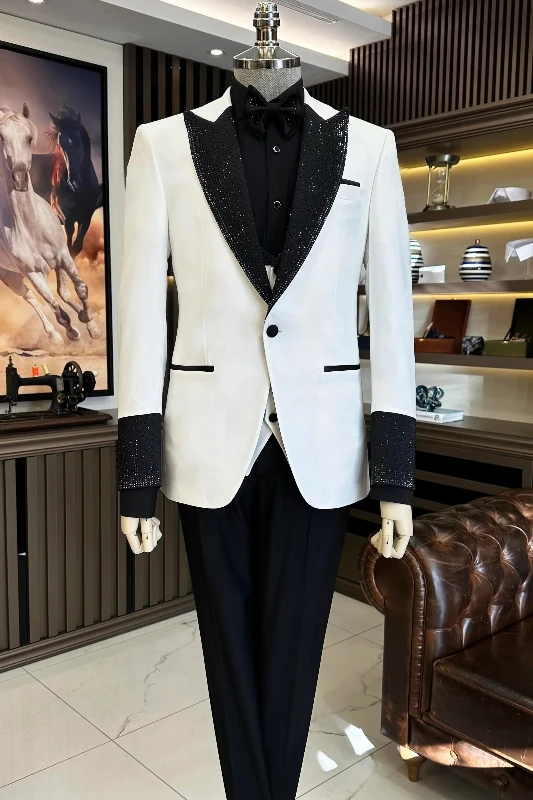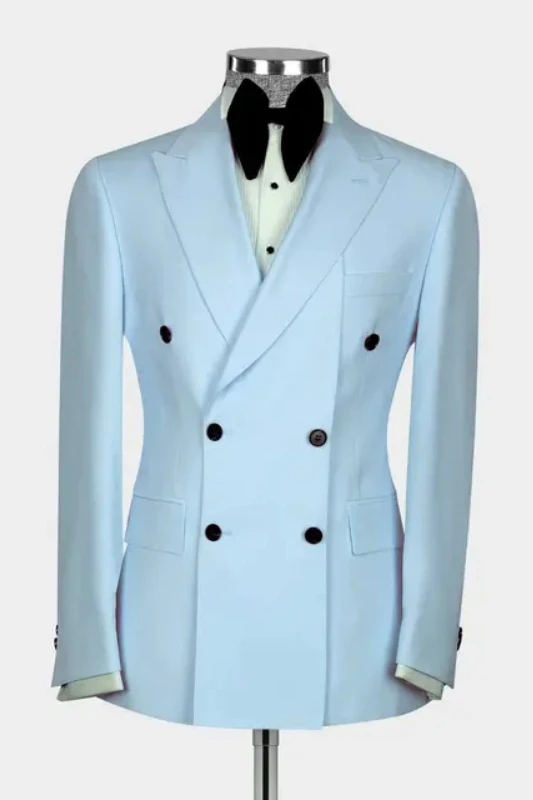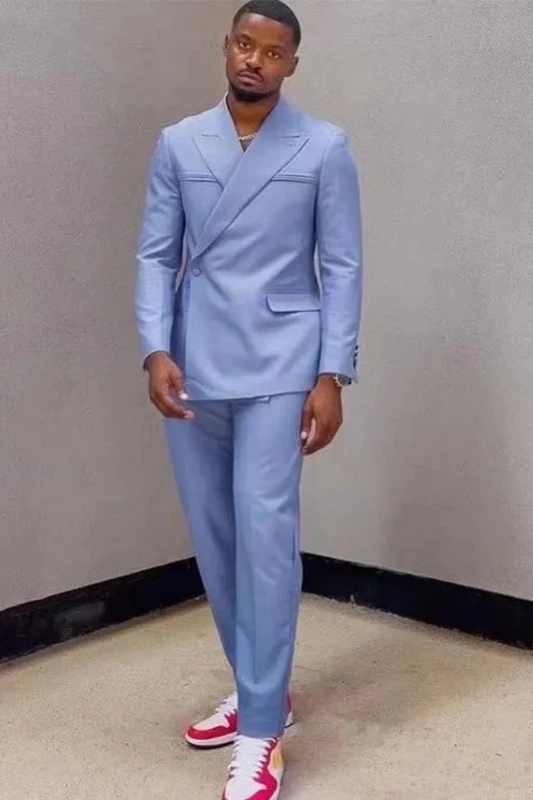The temperature is rising, so it's impossible not to be hot, but for those who love formal wear, there are some special tricks for cooling down while wearing a suit. Mastering some cooling-down techniques for wearing a suit might help you better get through this hot summer.
The dressing of summer gentleman's wear should be tasteful! The classic elements of formal wear, such as materials and cuts, cannot be careless. To dress well and modernly, know how to incorporate colors, layers, and fresh and exciting mixed into your outfit following the trends of each season. Today, let's talk about some suggestions for summer casual suit:
Technique 1
Choose the right lining
The principle of wearing summer suits is to reduce weight. Another secret for the light and breathable summer suits lies in the design of the lining fabric: semi-lined or no-lined designs.
The half-lined and unlined designs feature lightweight, cool and breathable properties, while maintaining a crisp feel. Removing the inner lining does not mean that the cutting and manufacturing process has been compromised. This is because the lining is necessary to ensure that the fabric fits well and corrects any body shape flaws. Therefore, the manufacturing process is more challenging than that of ordinary suits.
Technique 2
Choose colors suitable for summer
Apart from the techniques mentioned above, choosing a color that is refreshing and not heavy is also one of the essential principles for reducing burden. The recommended colors for a cool summer suit: white, light gray, light blue, khaki, and earth tones. Wearing a white suit is very beautiful and clean, very outstanding and eye-catching, and is also a suitable color for summer.
Technique 3
Choose the appropriate fabric
1) Linen
Linen is the earliest natural plant fiber used by humans, with a history of over 10,000 years. Linen is a pure natural fiber, as it has significant characteristics such as good sweat absorption, good breathability, and being harmless to the human body.
Linen fabric is woven from linen threads, and its surface is not as smooth as synthetic fibers or cotton fabric. It has vivid undulating textures, and painters often utilize the subtle and interesting aesthetic of linen fabric. In addition to synthetic fibers, linen fabric is one of the most durable types of textiles. Its fiber strength is high, and it is not prone to tearing or puncturing, allowing a palette knife to be scraped or pressed on it at will.
2) Bubble Weave
Bubble weave sounds very much in harmony with the summer season. Although it is called "weave", it is actually made by using a special process to process lightweight and fine cotton fabric, creating natural and exquisite ruffles on the fabric. The small, uneven bubbles look like tiny waves in the sunlight.
Bubble weave initially became popular in India during the British colonial rule period. It was later introduced to the United States through colonial trade, and then was worn by wealthy people from the north to the hot southern United States for vacations. As a result, bubble weave became widely popular and was welcomed by people. Before the invention of air conditioning, bubble weave was also regarded as the mainstay of the summer wardrobe.
The Americans' passion for bubble yarn has reached its peak, and even an "Bubble Yarn Day" was born. Although it was discontinued in 2012, this did not diminish people's love for bubble yarn.
3) Blending
Compared to pure wool fabric, blended fabric is lighter and thinner, and won't cause too much burden when worn in summer. Blended fabric has better wrinkle resistance, drape and glossiness than pure linen fabric, and the price is also relatively higher. The diverse colors and textures of blended fabric, as well as its better gloss, make it even more appealing.














